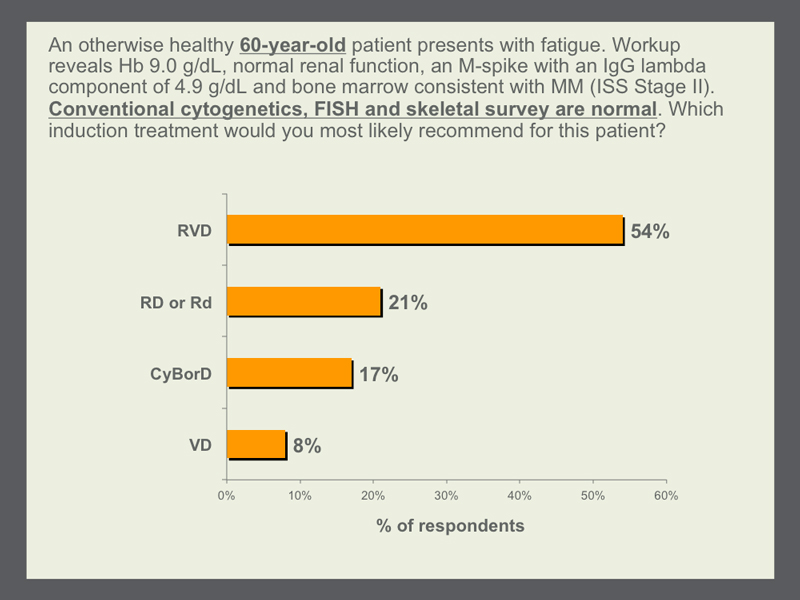Induction treatment for younger, transplant-eligible patients at standard riskInduction treatment for younger, transplant-eligible patients at standard risk
Editor's comments
The first scenario we asked about was a younger patient (age 60) with normal-risk myeloma who is a transplant candidate, and we found that by far the most common choice of induction treatment was RVD (lenalidomide/bortezomib/dexamethasone), the same choice as that of both faculty. Surprisingly, relatively few oncologists chose the other much-discussed triplet regimen, CyBorD (cyclophosphamide/bortezomib/dexamethasone). In spite of the encouraging results in 2 major Phase II trials, the CRD regimen with carfilzomib is not being used, but the Phase III randomized ECOG-E1A11 trial is comparing CRD to RVD. |

